Abstract
The present study explored the effects of a precurrent contingency in which one (precurrent) activity increased the reinforcement probability for another (current) activity. Four human subjects responded on a two-key computer mouse. Each right-key press was reinforced (points exchangeable for money) with .02 probability. In one condition (no precurrent contingency), pressing the left key had no scheduled consequence; in another condition (precurrent contingency), pressing the left key increased the reinforcement probability for right-key responding to .08 for 15 s. Initial exposure to the precurrent contingency resulted in acquisition of precurrent left-key responding for 3 subjects, but for the 4th subject a special contingency was required. Right-key responding occurred at a high stable rate across the conditions. Changeovers to left-key responding dropped to near zero when the precurrent contingency was absent and were maintained at enhanced levels when the precurrent contingency was present. Contacts with the left key consisted of short response runs. Right-key responses were more frequently emitted within 15 s of a left-key response when the precurrent contingency was present, an efficient adaptation to the contingency. Continued research on precurrent behavior may produce insights into complex phenomena such as autoclitics and self-control.
Keywords: precurrent behavior, precurrent contingency, changeover, current behavior, free operant, probability schedule, key press, humans
Full text
PDF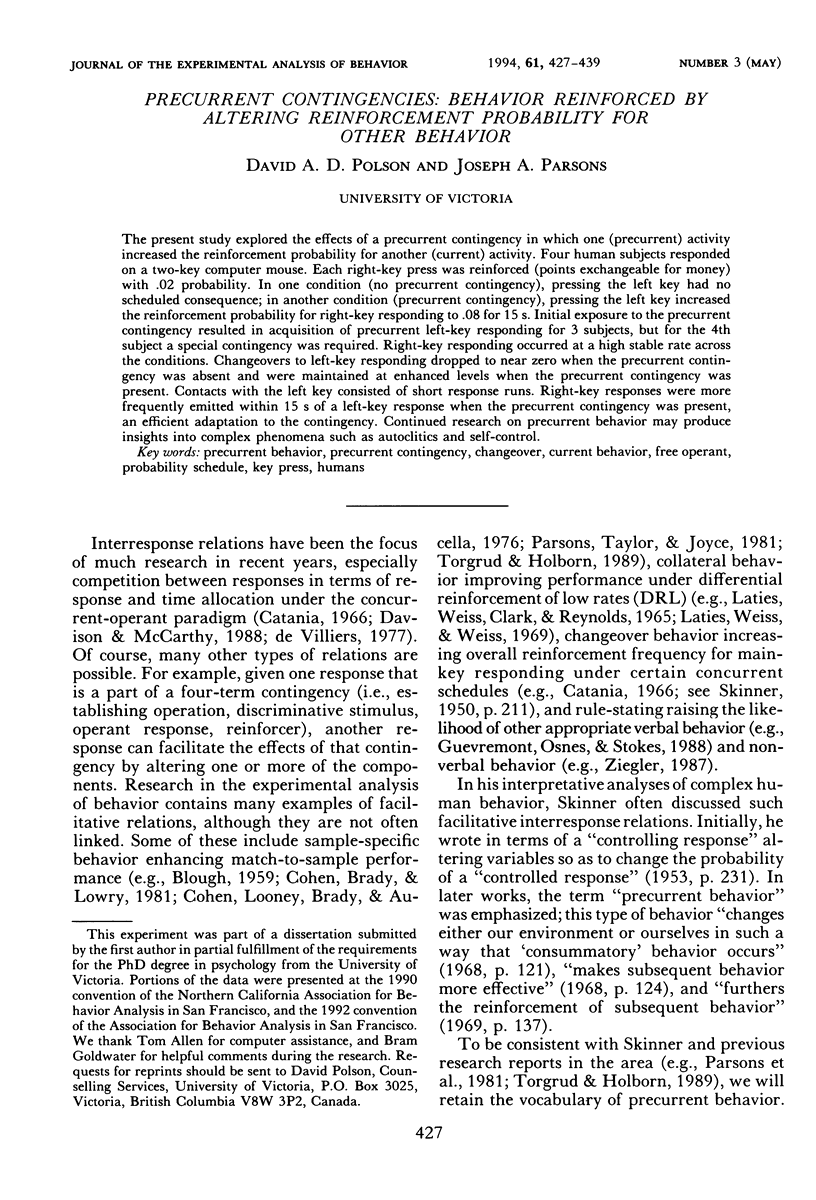

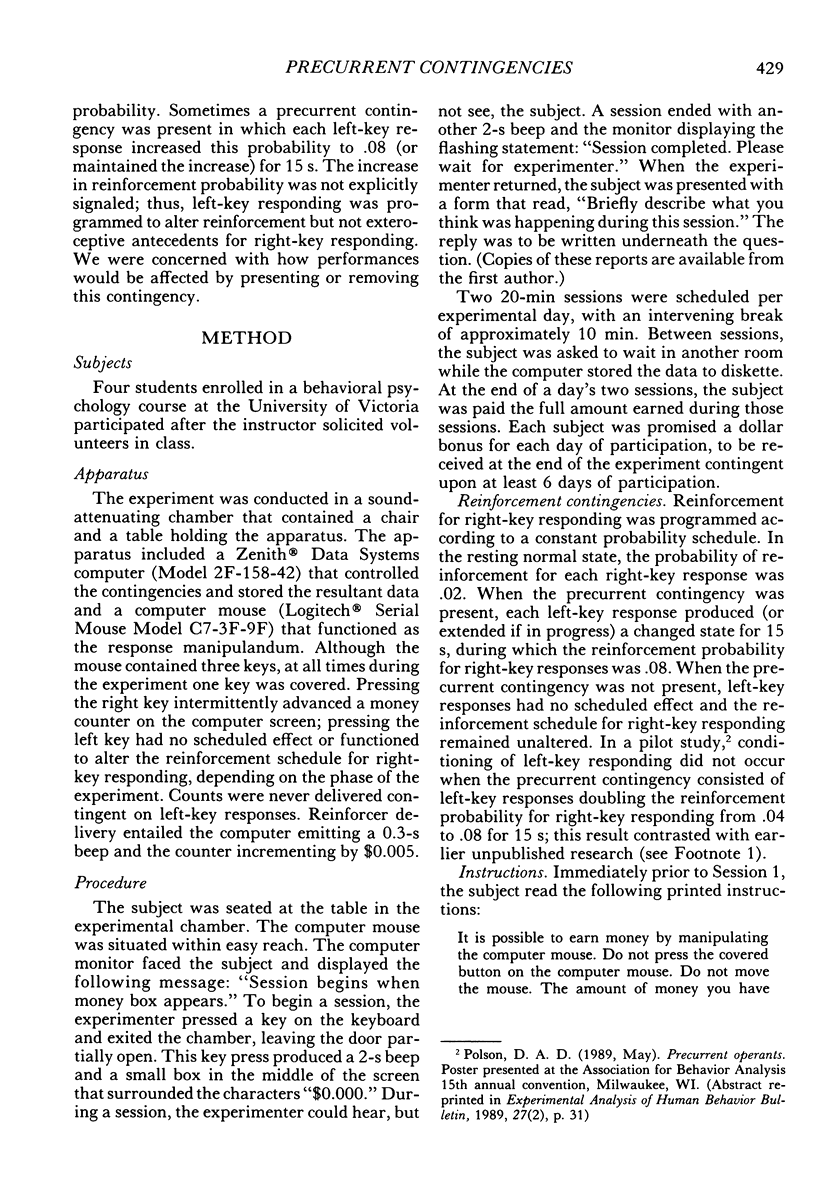
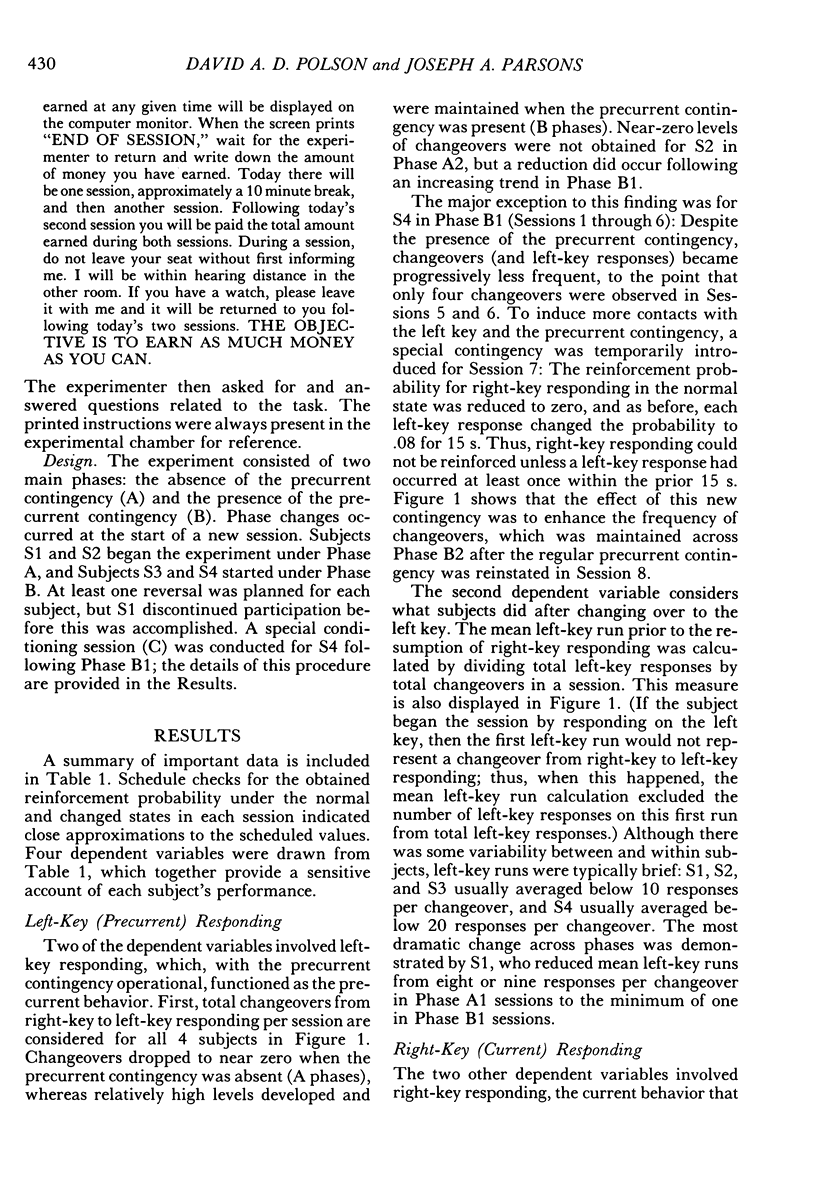
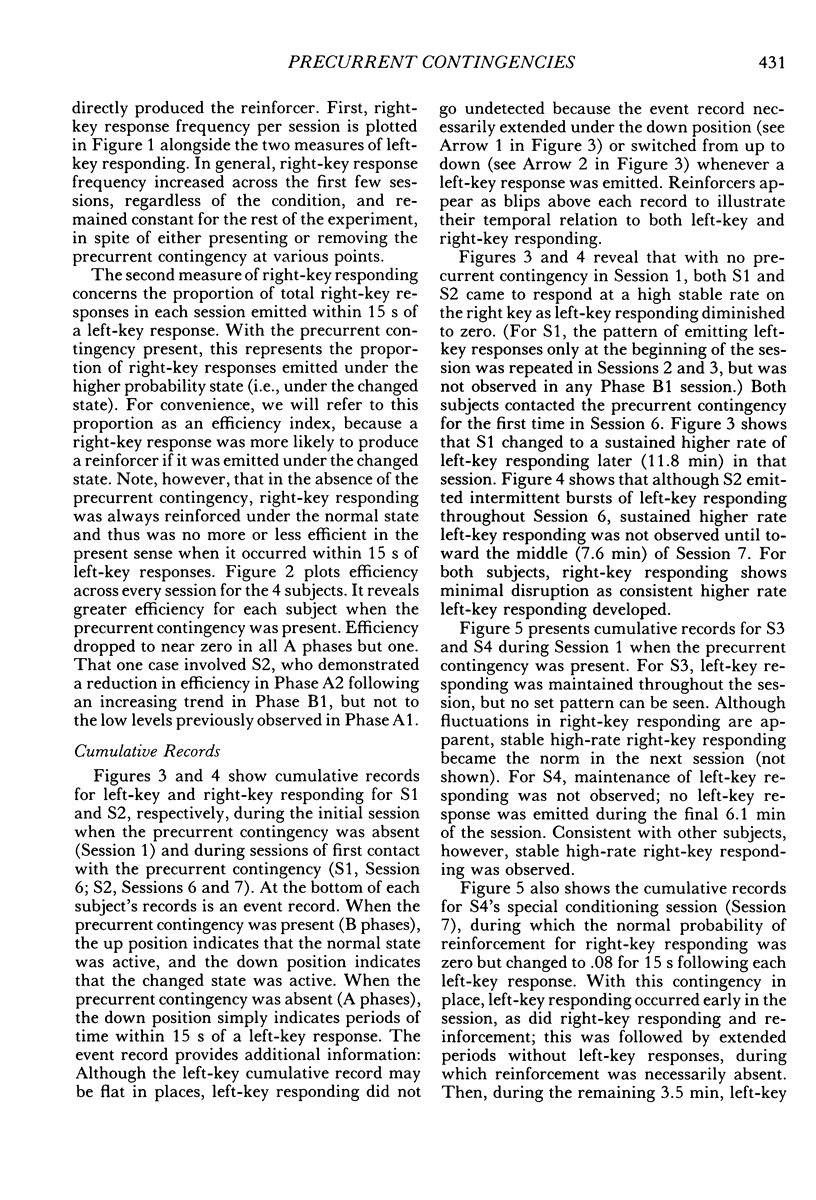
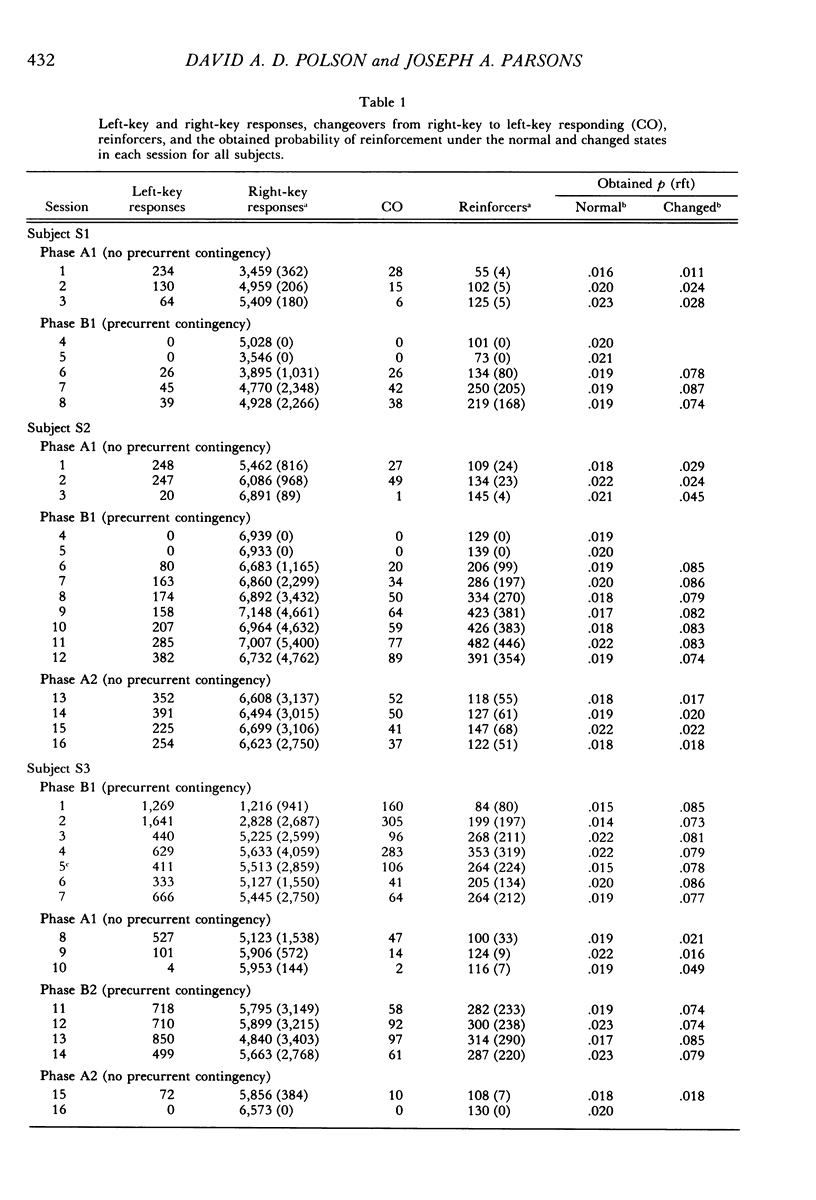
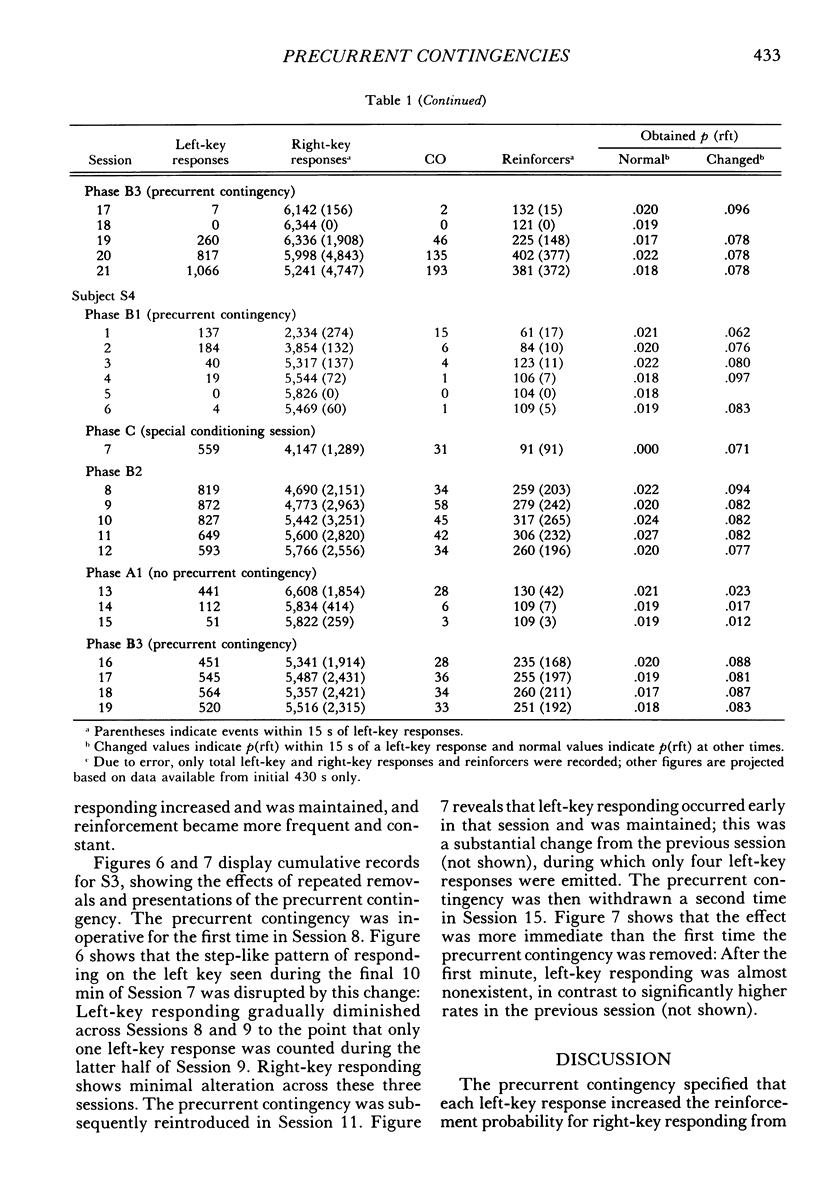

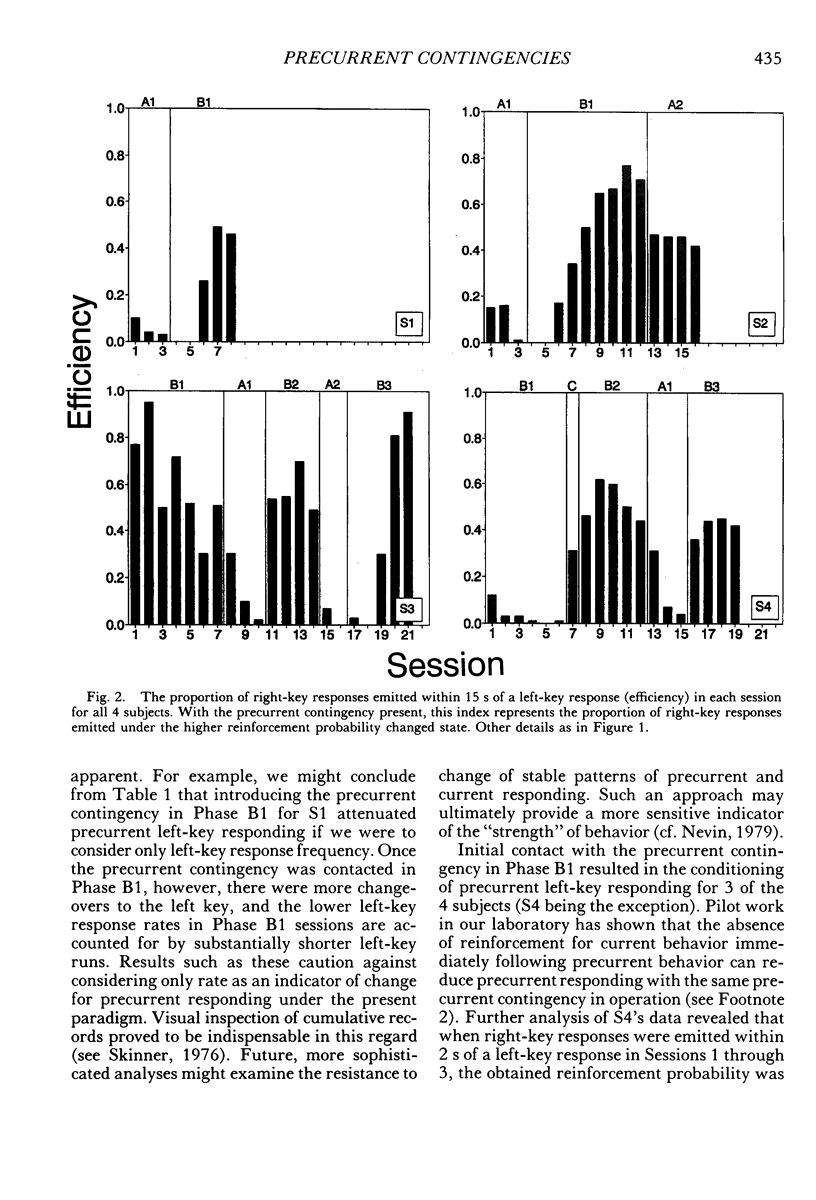
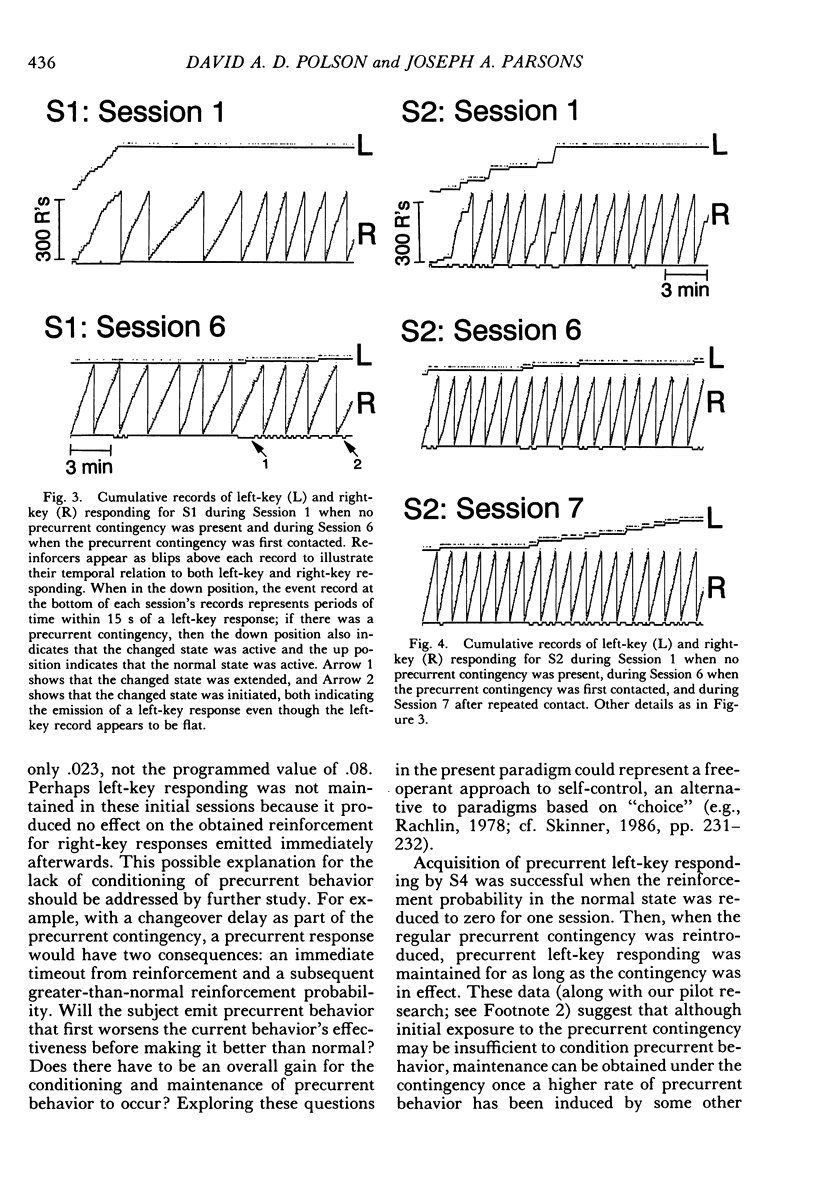
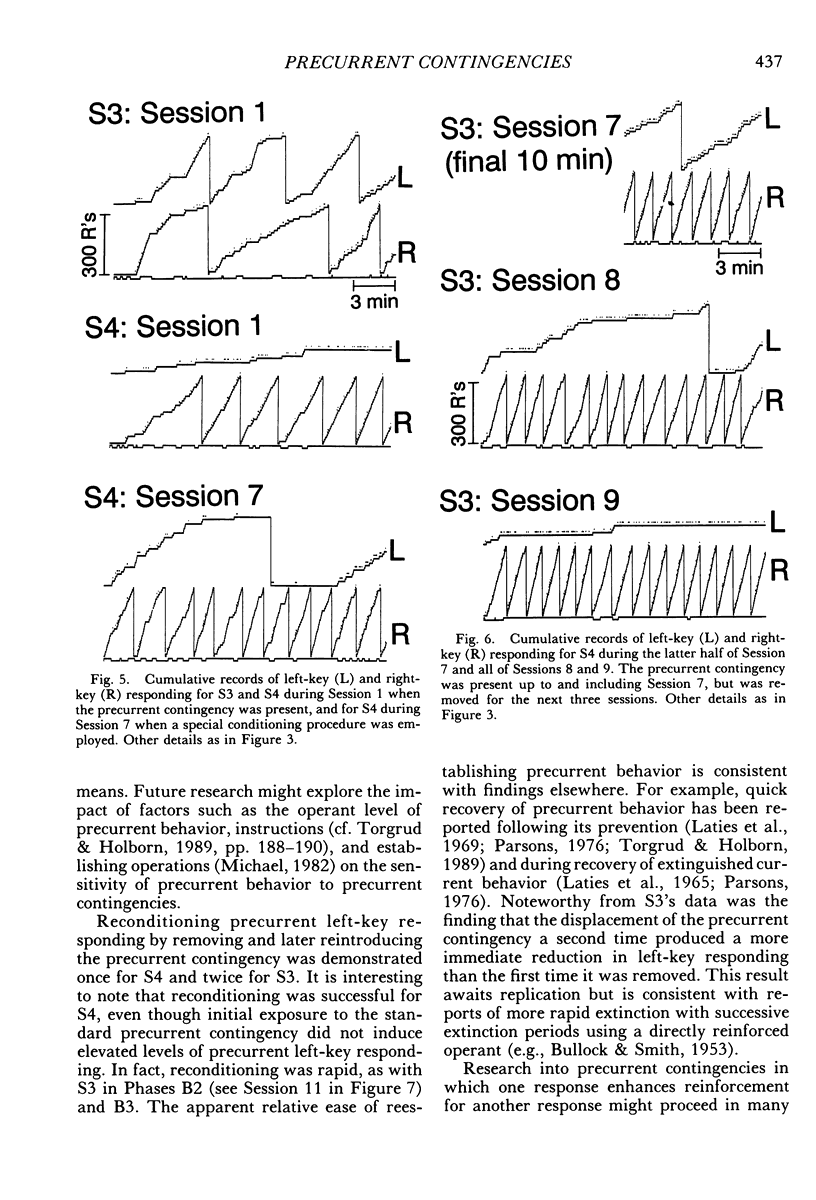

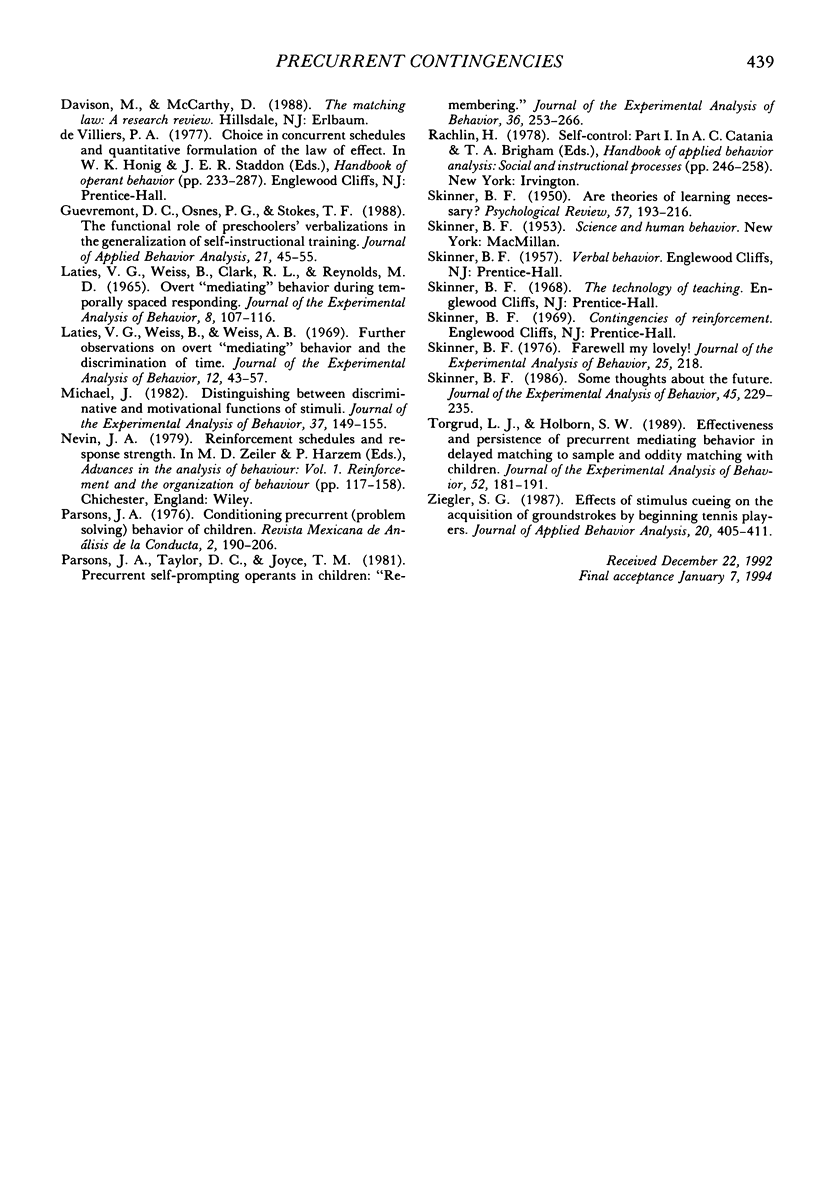
Selected References
These references are in PubMed. This may not be the complete list of references from this article.
- BLOUGH D. S. Delayed matching in the pigeon. J Exp Anal Behav. 1959 Apr;2:151–160. doi: 10.1901/jeab.1959.2-151. [DOI] [PMC free article] [PubMed] [Google Scholar]
- BULLOCK D. H., SMITH W. C. An effect of repeated conditioning-extinction upon operant strength. J Exp Psychol. 1953 Nov;46(5):349–352. doi: 10.1037/h0054544. [DOI] [PubMed] [Google Scholar]
- Case D. A., Ploog B. O., Fantino E. Observing behavior in a computer game. J Exp Anal Behav. 1990 Nov;54(3):185–199. doi: 10.1901/jeab.1990.54-185. [DOI] [PMC free article] [PubMed] [Google Scholar]
- Cohen L. R., Looney T. A., Brady J. H., Aucella A. F. Differential sample response schedules in the acquisition of conditional discriminations by pigeons. J Exp Anal Behav. 1976 Sep;26(2):301–314. doi: 10.1901/jeab.1976.26-301. [DOI] [PMC free article] [PubMed] [Google Scholar]
- LATIES V. G., WEISS B., CLARK R. L., REYNOLDS M. D. OVERT "MEDIATING" BEHAVIOR DURING TEMPORALLY SPACED RESPONDING. J Exp Anal Behav. 1965 Mar;8:107–116. doi: 10.1901/jeab.1965.8-107. [DOI] [PMC free article] [PubMed] [Google Scholar]
- Laties V. G., Weiss B., Weiss A. B. Further observations on overt "mediating" behavior and the discrimination of time. J Exp Anal Behav. 1969 Jan;12(1):43–57. doi: 10.1901/jeab.1969.12-43. [DOI] [PMC free article] [PubMed] [Google Scholar]
- Michael J. Distinguishing between discriminative and motivational functions of stimuli. J Exp Anal Behav. 1982 Jan;37(1):149–155. doi: 10.1901/jeab.1982.37-149. [DOI] [PMC free article] [PubMed] [Google Scholar]
- Osnes P. G., Stokes T. F. The functional role of preschoolers' verbalizations in the generalization of self-instructional training. J Appl Behav Anal. 1988 Spring;21(1):45–55. doi: 10.1901/jaba.1988.21-45. [DOI] [PMC free article] [PubMed] [Google Scholar]
- Parsons J. A., Taylor D. C., Joyce T. M. Precurrent self-prompting operants in children: "Remembering". J Exp Anal Behav. 1981 Sep;36(2):253–266. doi: 10.1901/jeab.1981.36-253. [DOI] [PMC free article] [PubMed] [Google Scholar]
- SKINNER B. F. Are theories of learning necessary? Psychol Rev. 1950 Jul;57(4):193–216. doi: 10.1037/h0054367. [DOI] [PubMed] [Google Scholar]
- Skinner B. F. Farewell, My LOVELY! J Exp Anal Behav. 1976 Mar;25(2):218–218. doi: 10.1901/jeab.1976.25-218. [DOI] [PMC free article] [PubMed] [Google Scholar]
- Skinner B. F. Some thoughts about the future. J Exp Anal Behav. 1986 Mar;45(2):229–235. doi: 10.1901/jeab.1986.45-229. [DOI] [PMC free article] [PubMed] [Google Scholar]
- Torgrud L. J., Holborn S. W. Effectiveness and persistence of precurrent mediating behavior in delayed matching to sample and oddity matching with children. J Exp Anal Behav. 1989 Sep;52(2):181–191. doi: 10.1901/jeab.1989.52-181. [DOI] [PMC free article] [PubMed] [Google Scholar]
- Ziegler S. G. Effects of stimulus cueing on the acquisition of groundstrokes by beginning tennis players. J Appl Behav Anal. 1987 Winter;20(4):405–411. doi: 10.1901/jaba.1987.20-405. [DOI] [PMC free article] [PubMed] [Google Scholar]


